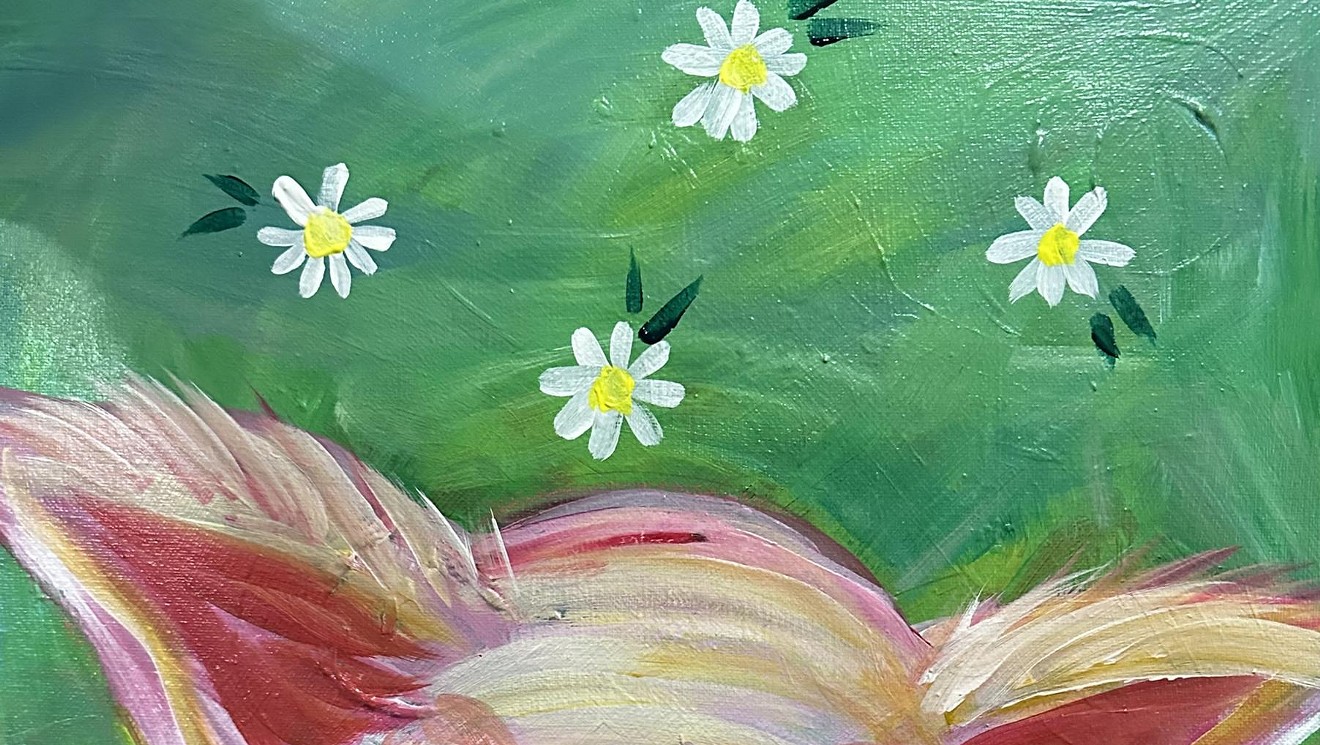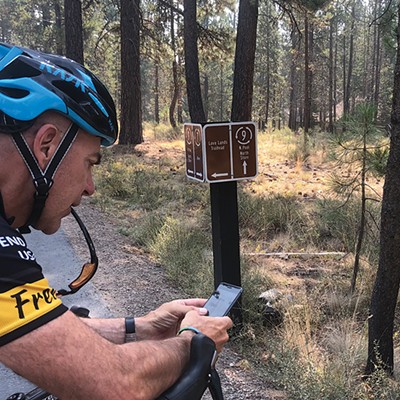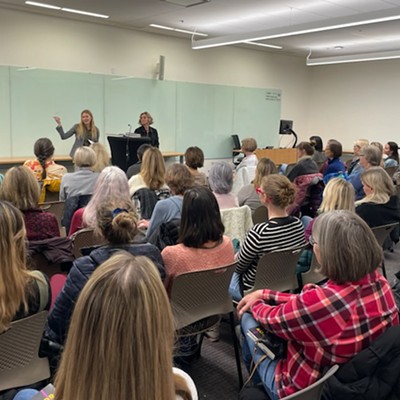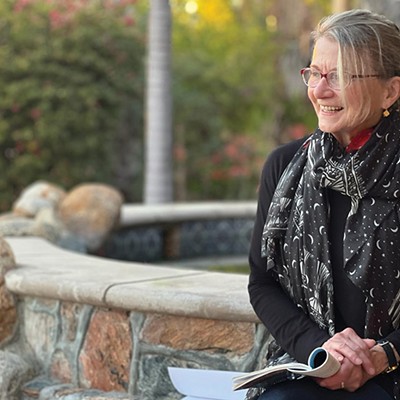The peculiar and markedly simple card game of faro might actually be spelled "pharaoh," but there's no point in debating the spelling because hardly anyone has played the game in the last century. But down at the High Desert Museum, faro is being played, the antiquated cards dealt onto a century-old table by a young man dressed in a vest, dress shirt and a bowler hat.
He's dressed like it's 1900, which is exactly the time period the High Desert Museum is trying to create with its Sin in the Sagebrush exhibit, a meticulously crafted, time-period-accurate look into the gambling, drinking, whoring, fighting, dancing, shooting and other displays of general debauchery that accompanied life in the often harsh Western frontier. The exhibit, running through September before hitting the road to other museums around the country, has been some three years in the making, as curator Bob Boyd and his team gathered genuine articles from this era like, for example, an array of gamblers' cheating devices, including a strap that allowed card players to literally keep an ace up their sleeves.
Jason Hogstad, still in his vest and bowler, dealing cards and taking bets during a game of faro, explains the intricacies and history of this archaic yet mesmerizing game (so much more engaging than those video lottery machines), rattles off a few other games that would have been played in those days. But was gambling really as rampant in the frontier West as movies have led us to believe?
"From what we've researched, it was quite prevalent," says Hogstad, slapping onto the table another pair of cards that sends a few chips into the dealer's bank. While gambling was indeed rampant, Boyd, who spends his days teaching history at High Desert Middle School, says that the mostly glamorous macho playground portrayed in Hollywood westerns is less than accurate. In reality, life in the frontier American West meant working on railroads and in the mines. In some cases this was just a slight step up from hell given the long workdays, harsh conditions and the loneliness that comes along with the fact that men outnumbered women in some places by a rate of nine to one. It's probably because of those hardships that the "sin" elements became so widespread in this region during that time.
"You were paying for a brief sense that you'd made it before you had to go back out into the cold," says Boyd, "The more we got into this, the more we realized it's a story about trying survive in a barren, forlorn place where if things go wrong, it's a long ways to go for help."
The exhibit features a saloon setting complete with a bar top shipped in from Montana and bottles of Old Crow with authentic labels, spittoons aplenty and whiskey barrels under the bar. But don't ask for a shot - that convincingly brown liquid is just old tea. And if you think Oregon's beer industry is a relatively new addition to our state, you'll rethink that when you see an array of Henry Weinhard's iconography in Stockman's Saloon. There's also a sector about brothels, with a small bedroom display set up in a corner and other artifacts.
"We just talk over the kids' heads when we get to the brothel," says Linda Evans about how the museum deals with younger visitors. She's wearing a Victorian-style dress that begins at her throat and ends at her toes that she wears for her "living history" job in the exhibit.
Also to be found in Sin in the Sagebrush is a portion about Chinese immigrants with a mention of opium dens, as well as a display about tough men, which includes a set of bloodied boxing gloves that would have been used for the sort of last-man-standing prize fights that were commonplace in mining towns and railroad camps. And these are real boxing gloves from the real Wild West with real blood. Boyd wouldn't have it any other way.
To call Boyd "concerned" with historical accuracy is like saying that the kids of Jersey Shore are "kind of" interested in hair products. The man is downright obsessed with the exhibit's accuracy. When Boyd took a look at the canvas tent that serves as the mobile bar that would be found in a railroad camp, he thought it needed some more Wild West attitude - like maybe some bullet holes in the tent ceiling. But rather than poking a few holes in the canvas and calling it good, Boyd took the tent cloth out into the desert and fired a few rounds into it from his .45, lending some nice powder burns to the haggard canvas.
"If you go take in a display and you see something wrong, then the whole exhibit is suspect," says Boyd. "I want this to work for the interested yet uninformed public - and I don't mean 'uninformed' in a bad way - but I also want it to work for the Ph.D. Western history professor."
Sin in the Sagebrush
Running through September 26
at the High Desert Museum,
59800 S. Highway 97.
Visit www.highdesertmuseum.org
for more information.



















